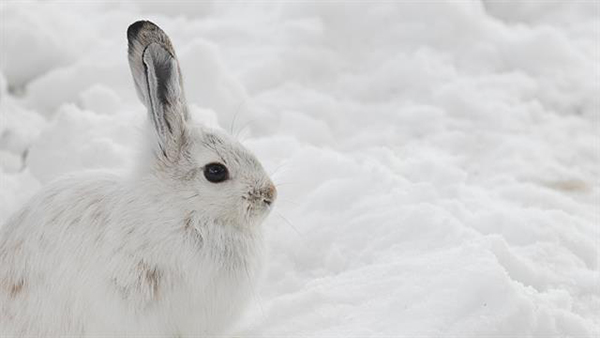A hope for the species that in winter become white

VIDEO A study shows how hares, foxes and partridges that change color with the arrival of snow can be protected from global warming by creating areas of encounter with the populations that remain dark
by Liz Langley
As for humans, even in the animal kingdom: the cooler the environment you live in, the more you need winter accessories.
Even some animals have two cloaks: one for the summer, in tone with the bare soil, and one winter white, to blend in with the snow.
But what happens if there is no snow and can not take off the "coat" off?
In a new study published in Science, the scientists examined 21 species in 60 countries that have a brown coat that changes to white to camouflage with the snowpack. With climate change that reduces the number of snowfalls many of these animals become white when in reality there is no snow, making them more vulnerable.
However, the study has discovered some possible shelters for these creatures: geographic regions that host both species that change their coat shades and keep them dark.
By protecting these particular areas, humans could allow species to spread genes related to the dark mantle, defeating global warming.
Some animals that practice this seasonal mimicry are the snow shoe hare (Lepus americanus), the arctic fox and the ptarmigan.
Their ability to change color "is a feature of the evolution that has allowed these animals to pass through climate change over time," says the lead researcher, the University of Montana naturalist L. Scott Mills.
The hare snow shoe, for example, was once present up to North Carolina, but now stops at West Virginia, just because of the lack of snow. A trend that researchers have also verified in other species that change color, explains coauthorice Jennifer Feltner, a PhD student at the University of Montana.
The amount of light during the day triggers the change in their coat, regardless of whether it has snowed or not. Rising on the ground with their white color these hares however become easy victims of predators.
"Being the wrong color is fatal," says Mills, and hares have a large number of predators. These animals also do not know they are easily visible and therefore do not change their behavior, he adds.
For the white partridges the question is another. For them, color is important as a form of sexual attraction, remember Mills: those that become white remain such, whether there is snow or not, until they mate.
After that they "find a pool of mud or feces and roll in until they become brown", regaining their camouflage.
Mills suggests that, given the rapidity of climate change, "the same selective forces that led to winter change from brown to white could become a tool for conservation".
For example, the research group has found "hot spots", many of which in North America and Eurasia, which are excellent candidates for a project to protect these animals that change color, giving them the opportunity to recover.
"Evolution proceeds faster when populations are numerous and connected," says Mills.
Keeping in touch the populations of animals that remain brown in the winter and those that become white would allow them to "spread the genes of the most protective dark coat to the neighboring populations that change to white, helping them to adapt as the snow cover becomes less frequent ".
Supporting the permanence of numerous populations and the possibility of coming into contact with each other across the territory "should be our main effort", concludes Mills.
oprajwadesk